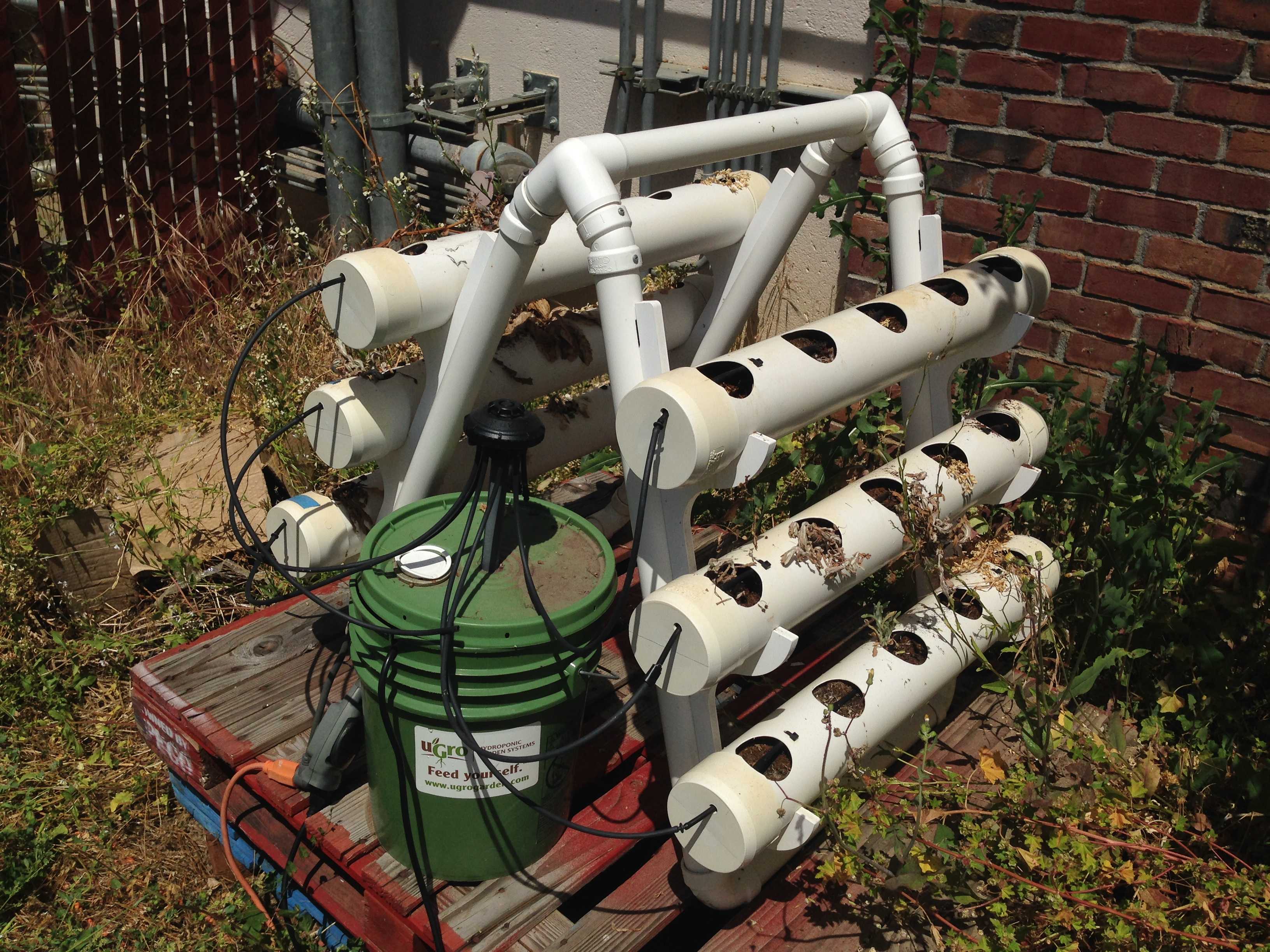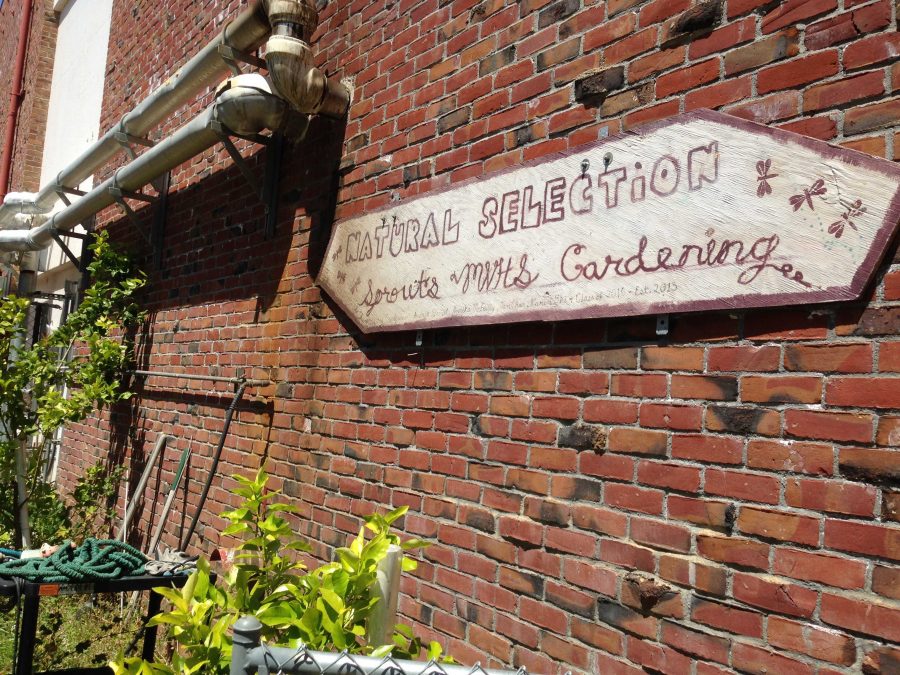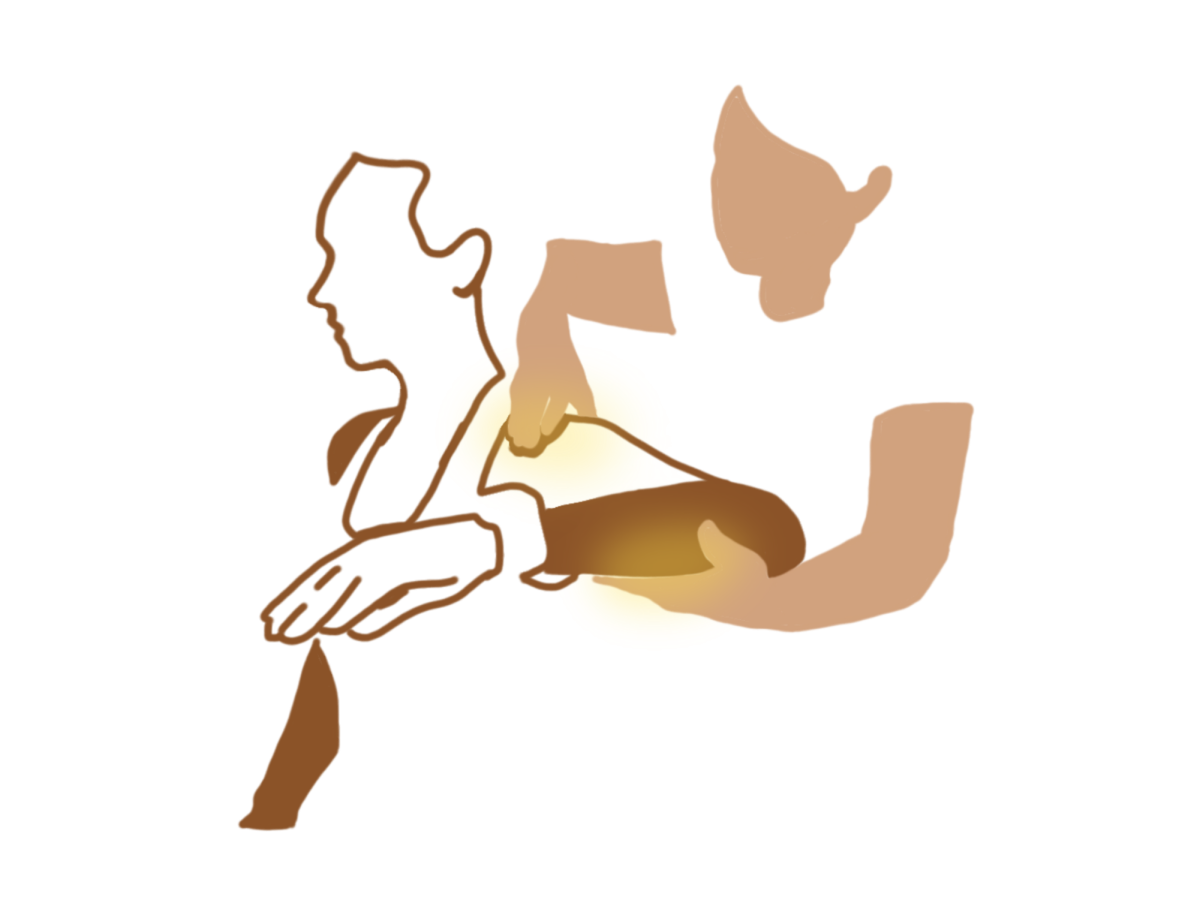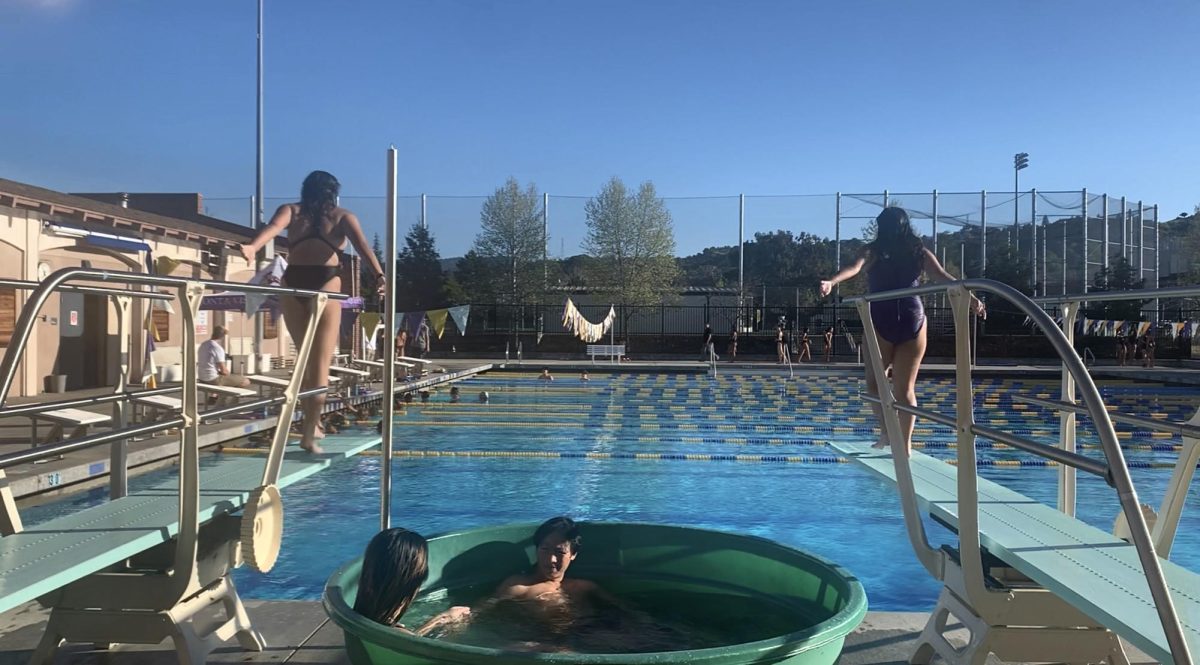Photos by Sebastian Zhang
Limes ripen under the sun. A drunken butterfly floats by with the wind. Shovels lie around in planter boxes, with plants in some, others empty. Weeds eat their way from the outskirts in. Slowly, relentlessly. But there is a greater force at play. When school’s out and the sun blazes high above, this sanctuary of life will be torn down to make room for new classrooms.

Breaking down the origins
It all started as an empty plot of land under the heating and cooling equipment by the B building. In 2012, Biology and Environmental Sciences teacher Andrew Goldenkranz decided to turn it into something. United by a vision, he and similarly driven students in his Biology class formed the Sprouts Gardening Club. Receiving additional funding from a winning TEDx video done by a group of World Literature students, Sprouts began to turn that empty space into a garden.

Finding that the ground was too hard to dig, they shoveled soil into planter boxes where they grew crops including arugula, fennel and mint. They also planted trees, including one with six different types of apple grafted to it. The trees, along with a blackberry bush, went into the ground because they needed to be rooted deeper and given more space than the planter boxes allowed for.
In order to grow large quantities of crop without using up land, they hung up fabric shoe racks on the fence to grow herbs vertically. Harvest usually happens at the end of summer or fall, when many crops ripen. When the yield is big, they donate to Second Harvest Food Bank in Santa Clara. Crops in smaller amounts are given to the Monta Vista kitchen or cooked in class, as Goldenkranz once did for his Environmental Science students using his solar-powered cooker.

The garden gave more than fruits and vegetables.
It gave the school a touch of sexiness. According to senior Adithi Sajapuram, the Sprouts Gardening Club treasurer, the garden was partially created to give the campus some aesthetic beauty. The garden was also weaved into Biology, Environmental Science and Special Education science classes, where students performed activities such as analyzing the garden’s soil samples to learn concepts including soil science, botany and nutrition.
But the garden wasn’t just something nice to look at and learn from during class. According to senior Jan Chan, the Sprouts Gardening Club public relations manager, the club wants to promote feasible practices through implementing green technologies.
“We also want to promote the idea of sustainability,” Chan said, “so we also try to do things like [hydroponics] and compost bins. We want to try to recycle as much waste as we produce.”
The idea of hydroponics is to grow crops using nutrient water, without soil. The hydroponic unit sits over a small square of the garden. It consists of six PVC pipes with five cutouts in each. Herbs are grown into the cutouts. They are physically supported by coconut husk, and receive nutrient water from a pump. This unit allows the Sprouts team to grow large quantities without taking up much area.

Another one of the garden’s gifts germinated in the mind. Outside of the classroom, Goldenkranz referred to the garden by its other name: the Mental Health Garden, as it was also built to relieve student stress. He said that when veterans with PTSD and pressured students alike put their hands into soil, their mental health increases. Essentially, gardening acts as a form of therapy. Reconnecting with nature is especially healthy in the current society, where students are constantly distracted by technology, which Goldenkranz called a sign a stress.
“We know that in a modern society that the more mediating technologies we have between us and the natural world, that is one sign of stress,” Goldenkranz said. “So by bringing humans closer to the ecological landscape, it’s just shown that it’s a healthy thing.”
A Transitional Period
The garden will be torn down shortly after the school year ends. According to Goldenkranz, four new classrooms are scheduled to be built where the garden now stands, which is a bigger decision than he can have a say in.
Because of its imminent destruction, the Sprouts team is in the process of clearing the garden, and so they have done little planting this year. They will have to find ways to use the crops already good for harvest; for example, Goldenkranz suggested putting the mint into lemonade. As for the still-growing crops, the trees and the berry bush, Sprouts will plant them into buckets, which Goldenkranz’s environmental science class has already moved to the lawn outside of room B109; that is, right outside Goldenkranz’s classroom. Students of Goldenkranz’s environmental science class moved the planter boxes out there too to contain the buckets.

This temporary garden will go on for about a year as they prepare the new, permanent area for the garden. Once that is done, the garden will sit directly across the pathway from where it now is, in a larger space. Construction will take about a year, so if all goes to plan, students can expect to see it up and running by May 2017, and if not by then, around the beginning of school in Fall 2017.
There are a number of challenges in setting up the new location. According to Goldenkranz, the hardest step is having the ground staff reinstall the fence around the plot of land. He may even want one of the trees cut down to reduce the shade. Since the grass lawn changes the soil conditions, Sprouts must also test the soil in order to see if it is appropriate for growing crops.
“There’s a combination of physical texture, where you have the clay, sand and silt composition,” Goldenkranz said, “and then we do chemical testing for nutrients and for things like pH. And then we’ll then amend it appropriately.”
When the new garden is implemented, students can expect to see ongoing additions that add to the garden’s model for sustainability and good practices. In order to conserve water and encourage similar practices at home, Goldenkranz plans to install a drip irrigation system that runs on a timer. More efficient than the usual sprinklers, drip technology sends lower amounts of water directly to plants’ roots, which prevents water losses due to wind, runoff, evaporation and overspray.
Because the hydroponic unit relies on a pump to receive water, Goldenkranz plans to install solar panels so that during the summer, the pump runs off the sun’s energy. According to Chan, Sprouts also plans to implement a worm bin for composting.
This is a transitional period for the garden, but it’s not going anywhere. As seeds are planted, their roots will stretch into the minds of students, and out of this land so concentrated in technology, perhaps a greater respect for Mother Earth will sprout.

“If you treat nature as something that’s separate from you, then you’re going to be less inclined to protect it,” Goldenkranz said, “But the more engaged people are, then the more responsible they are going to hold it, and they’re going to treat soil like a living ecosystem rather than treat it like dirt.”





















